Eumorpha pandorus
Eumorpha pandorus pandorus
you-MOR-fuhmmpan-DOOR-uhs
(Hubner, [1821])
Daphnis
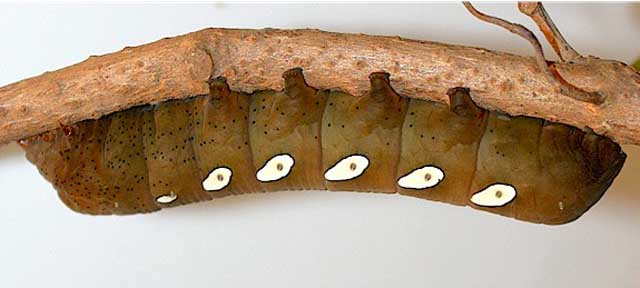
Eumorpha pandorus fifth instar (brown form) courtesy/copyright Greg Bingaman.
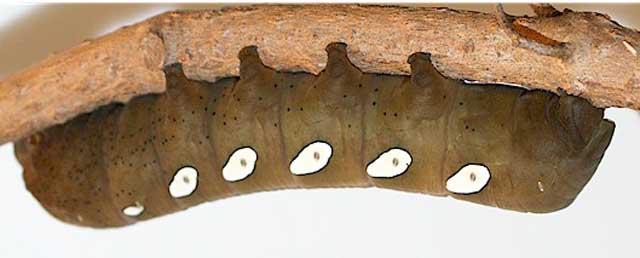
Eumorpha pandorus fifth instar (brown form) courtesy/copyright Greg Bingaman.
Greg Bingaman has had great success rearing Eumorpha pandorus from captured females. He has sent me a series of images as well as notes that I have
assembled below.
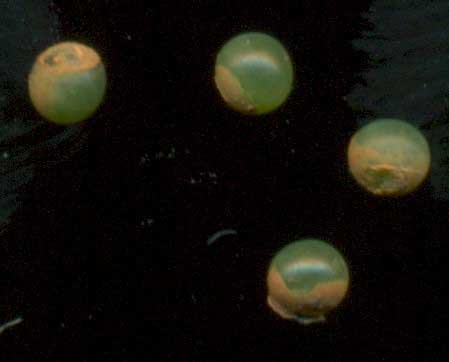
Eumorpha pandorus ova, courtesy/copyright Greg Bingaman,
(appear to have brownish-orange "glue", Bill Oehlke).
Ova: 1.25mm dark green, becoming more translucent prior to hatching.
First ova deposited 7/29/2011
First sign of hatching 8/2/2011
Incubation was as little as 3.5 days for some individuals kept at 75 degrees F. Of 200 ova only five failed to hatch and that could been due to damage during
removal from the cage, but I cannot rule out infertility. Point being, the hatch rate of the ova from two females is near 100%.
For the larvae stats, I use the following parameters:
Measurements are taken in mm, and closest to pre-molt as possible in a resting, non-distending posture.
The length of each instar includes the 24 (+ or -) hours of the actual molting process. For the final instar, days include up to the wondering/clearing stage.
At that point I reset and record time until actual pupation occurs.
Important note: the data is recorded from the first eyewitness of a change during development. As with many Saturniidae and Sphingidae larvae from the same cluth
may develop at different, varying rates for numerous reasons. The data below represents the fastest possible development of this group, even though after the
third instar development varied up to six days longer.
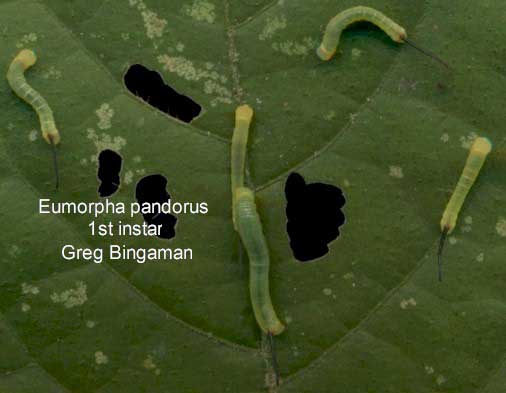
Eumorpha pandorus first instars, courtesy/copyright Greg Bingaman.
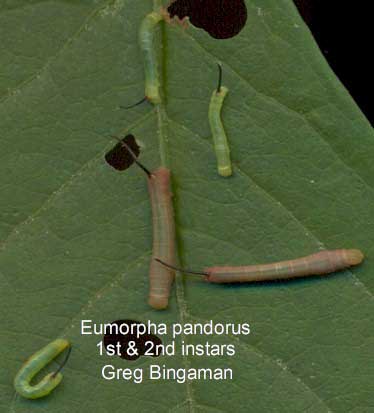
Eumorpha pandorus first and second instars, courtesy/copyright Greg Bingaman.

Eumorpha pandorus second instars, courtesy/copyright Greg Bingaman.
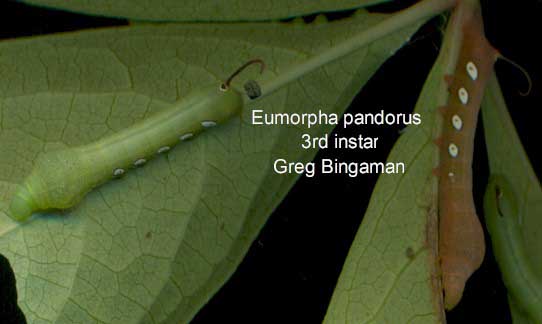
Eumorpha pandorus third instars, courtesy/copyright Greg Bingaman.
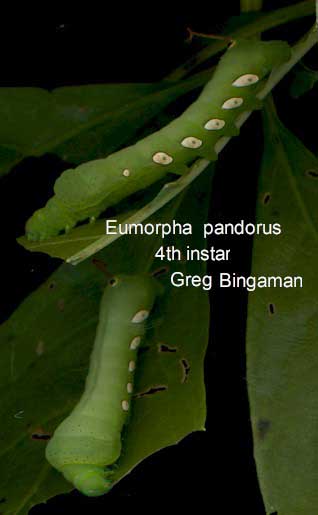
Eumorpha pandorus fourth instars, courtesy/copyright Greg Bingaman.
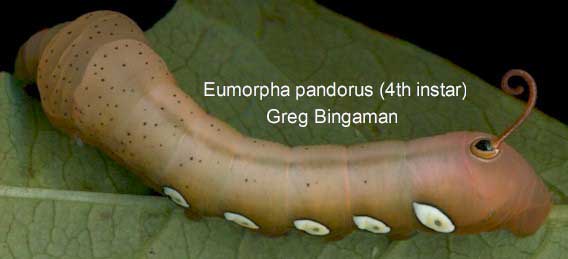
Eumorpha pandorus fourth instar, courtesy/copyright Greg Bingaman.
L1- 4days, 13mm. All larvae are green with black horns (very thin and straight) as long if not longer than the larvae themselves.
L2- 4days, 18mm. Some larvae now display the reddish/brown/pink. Horn is still quite long and black, as above.
L3- 4days, 23mm. The larvae now appear much like the mature version, but still with horn, which is now smaller and curling up and in towards the body.
L4- 6days, 35mm. As per L3
L5- 7days, 80+mm. Larvae now have lost the horn which is replaced with the button like eye spot.
Pre-pupation- 6 days.
Other info:
The larvae changed their coloration in some cases each molt. Some "dark forms" can go back to the green form, or vise versa. Also the dark forms can change to
another varying degree from a pinkish color to an almost "wet" black color until maturation. The oval/oblong patches enveloping the spiracles can vary from white to
yellow or orange(ish), also the number and development of these patches varies a bit.
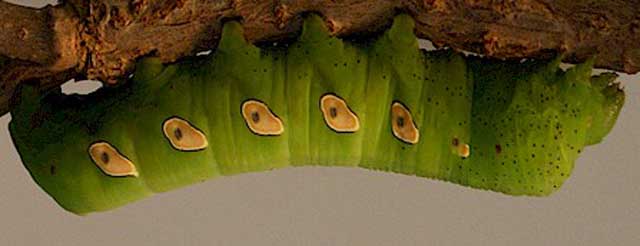
Eumorpha pandorus fifth instar (green form) courtesy/copyright Greg Bingaman.
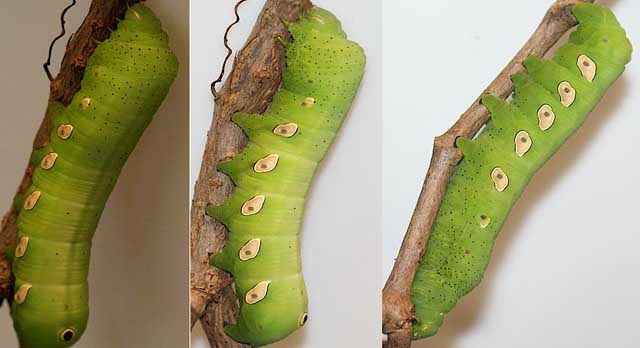
Eumorpha pandorus fifth instars (green forms) courtesy/copyright Greg Bingaman.
The pandorus larvae in the 4th and 5th instar are very very aggressive eaters, for that reason and many others, you should not overcrowd.
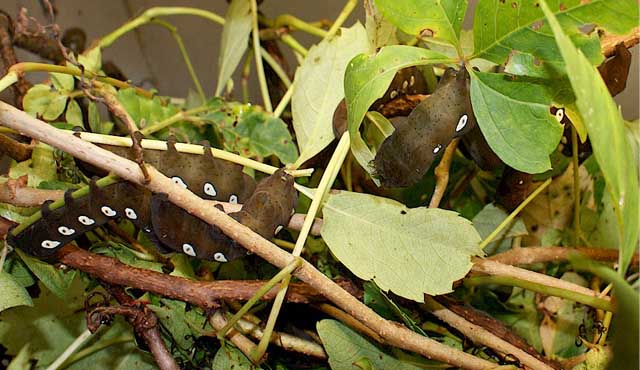
Eumorpha pandorus fifth instars, courtesy/copyright Greg Bingaman.
Larvae would switch back and forth between Grape and creeper.
Mature larvae will pupate in dark soil-less containers as well as ones filled with a sandy/peat loam.
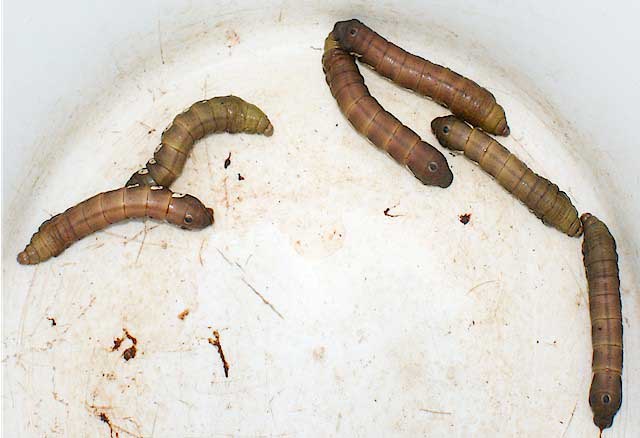
Eumorpha pandorus prepupal, courtesy/copyright Greg Bingaman.
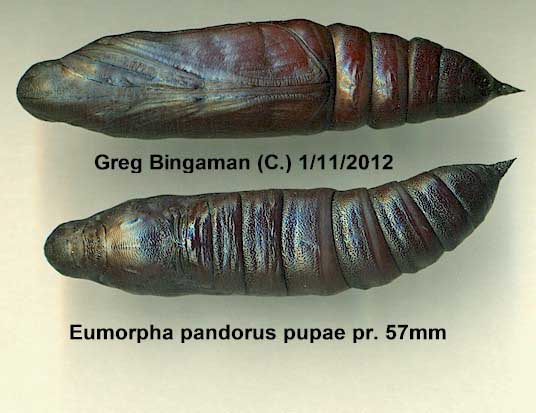
Eumorpha pandorus pupae, courtesy/copyright Greg Bingaman.
I went through many, many creeper vines, and during this project I found it very interesting in that of all the Sphingidae species that feed on creeper and grape
here in PA, I found no wild larvae of the pandorus or any other species, even though Darapsa myron males are very common throughout the summer at
my MV/blacklight set-ups.
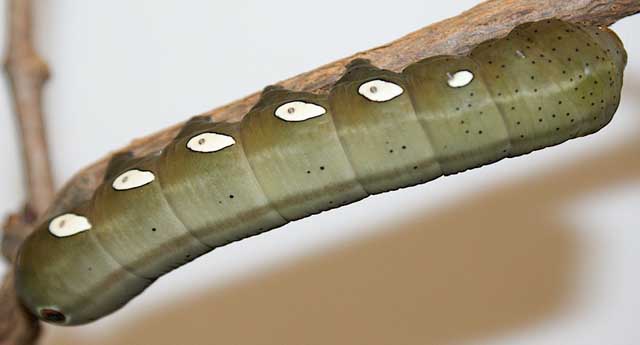
Eumorpha pandorus fifth instar, courtesy/copyright Greg Bingaman.
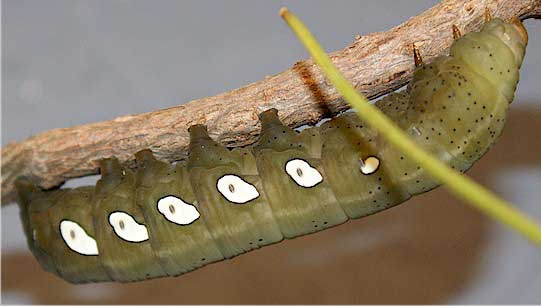
Eumorpha pandorus fifth instar, courtesy/copyright Greg Bingaman.
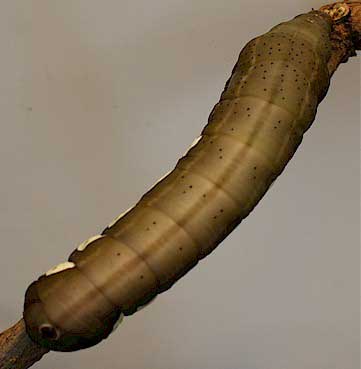
Eumorpha pandorus fifth instar (dorsal), courtesy/copyright Greg Bingaman.
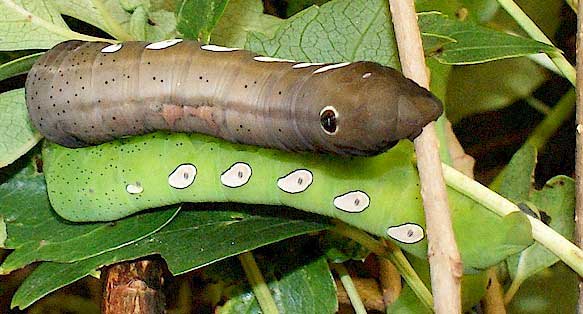
Eumorpha pandorus fifth instars, courtesy/copyright Greg Bingaman.
I hope this info is of use to others, post it as you wish.
Greg Bingaman, Muncy, PA, USA
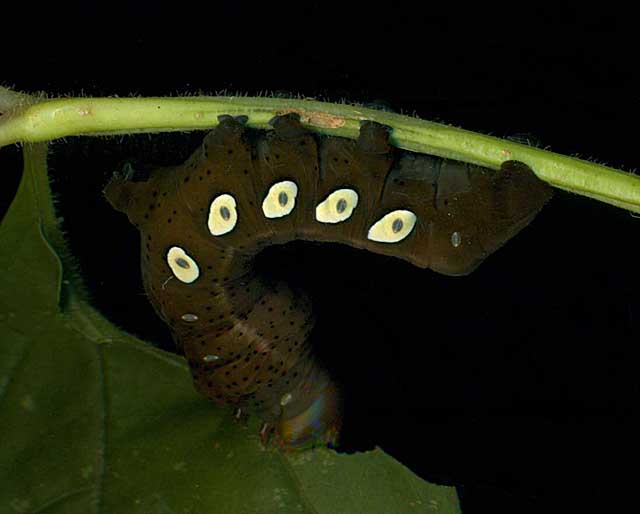
Eumorpha pandorus fifth instar (dark), courtesy/copyright Greg Bingaman.
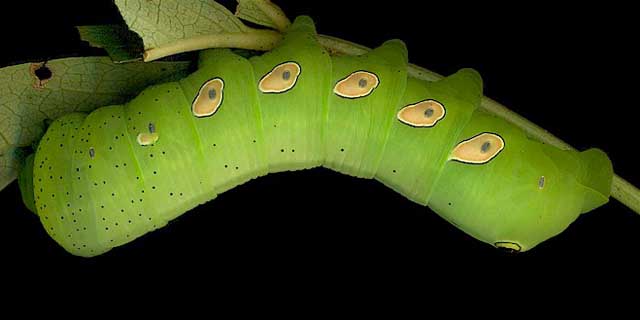
Eumorpha pandorus fifth instar (green), courtesy/copyright Greg Bingaman.
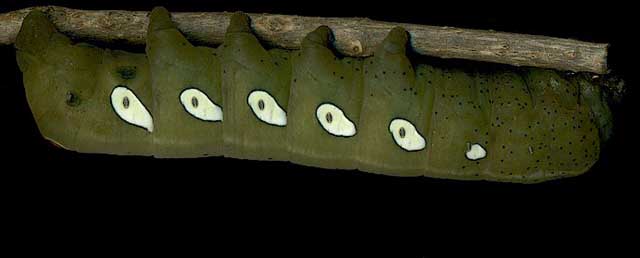
Eumorpha pandorus fifth instar (muddy green), courtesy/copyright Greg Bingaman.
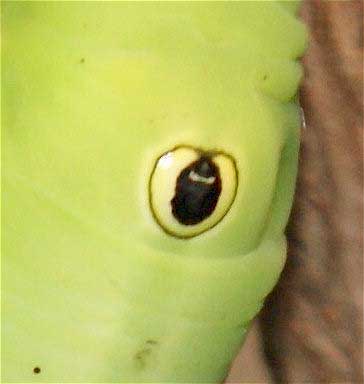
Eumorpha pandorus "anal eye spot", courtesy/copyright Greg Bingaman.
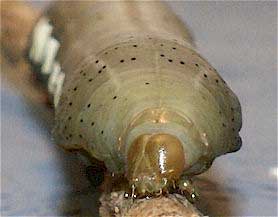
Eumorpha pandorus head, courtesy/copyright Greg Bingaman.
This site has been created by
Bill Oehlke at
oehlkew@islandtelecom.com
Comments, suggestions and/or additional information are welcomed by
Bill. | TAXONOMY:
Superfamily: Sphingoidea, Dyar, 1902
Family: Sphingidae, Latreille, 1802
Subfamily: Macroglossinae, Harris, 1839
Tribe: Philampelini, Burmeister
Genus: Eumorpha, Hubner, [1807]
Species: pandorus, (Hubner, [1821]) |
MIDI MUSIC
"What.A.Wonderful.World"
copyright C. Odenkirk
MIDI CITY
ON.OFF
<bgsound src="world.mid" LOOP=FOREVER>
|
Use your browser "Back" button to return to the previous page.
Enjoy some of nature's wonderments, giant silk moth cocoons.
These cocoons are for sale winter and fall. Beautiful Saturniidae moths will emerge the following spring and summer.
Read Actias luna rearing article. Additional online help available.
Use your browser "Back" button to return to the previous page.
This page is brought to you by
Bill Oehlke and the
WLSS. Pages are on space rented from Bizland. If you would like
to become a "Patron of the Sphingidae Site", contact Bill.
Please send sightings/images to Bill. I will do my best to respond to
requests for identification help.
 | 
Show appreciation for this site by clicking on flashing butterfly to the left.
The link will take you to a page with links to many insect sites. |
























